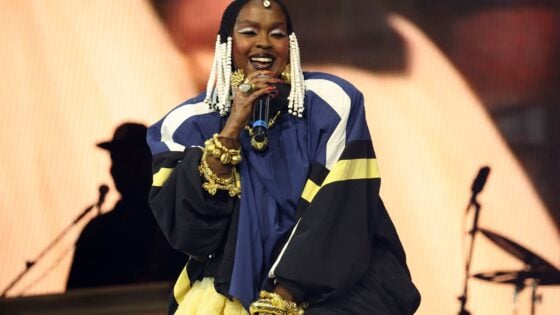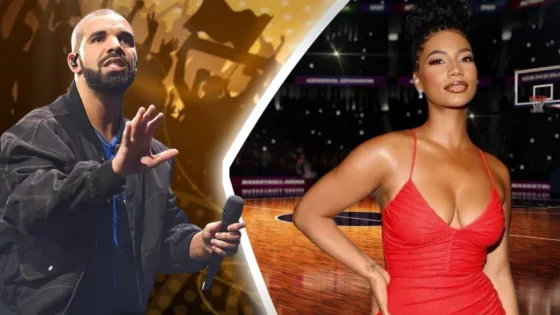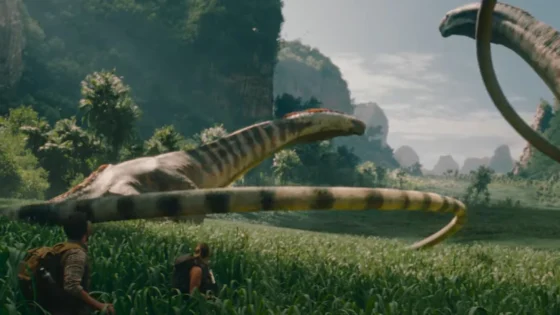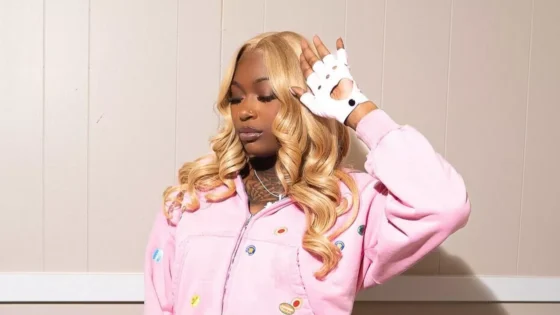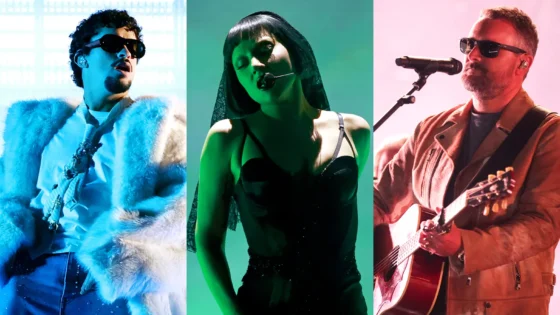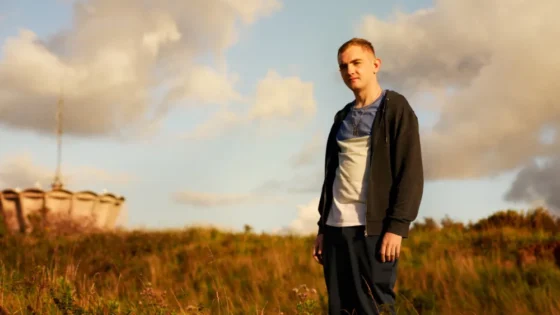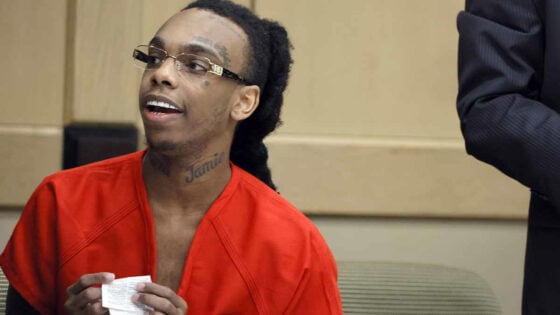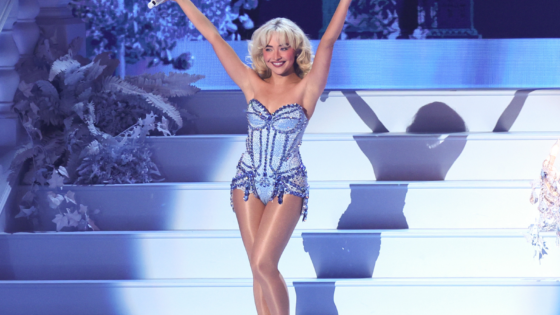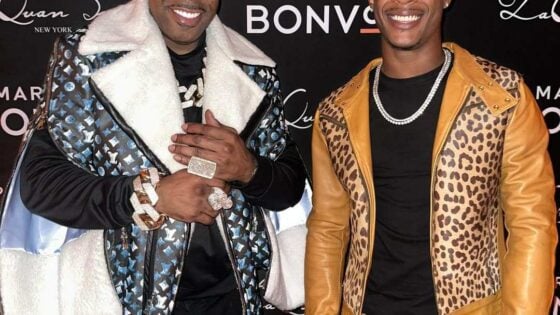Disney’s Live-Action Remake Trend Begins
It was always going to arrive at this moment. The pattern started in 2010 with Tim Burton’s not-at-all-good remake of Alice in Wonderland, when the Disney Entertainment Complex realized it could rake in billions of dollars simply by reimagining its beloved animated classics through the use of live-action performers and cutting-edge CGI. Over the past 15 years, the studio has gleefully devoured its own back catalogue in a never-ending hunt for profits, extracting nostalgia from millennial fans as though siphoning cerebrospinal fluid. This approach turned out to be rather curious, considering how many of the original animated films were themselves based on folk tales, ancient legends, or children’s literature that filmmakers worldwide have been re-adapting for countless generations.

Nevertheless, the reason for remaking these tales (beyond the money gained through selling nostalgia) seemed to hinge on Disney’s desire to maintain a firm grip on iconic stories like “Cinderella,” “Aladdin,” and “The Little Mermaid.” Their motivation, it appears, was to impress upon modern audiences that Disney’s version is, in some sense, the “official” depiction of these narratives. Hans Christian Andersen, according to this mindset, was just some dusty writer of long-ago tales, and there was no pressing need to revisit the actual source material he created.
Of course, because Disney cannot own stories in the public domain outright, the company instead wields its powerful, octopus-like marketing machine to convince the public that the studio’s takes on these well-worn fables are the definitive standard. Filmmakers can adapt these tales as often as they like, but Disney’s presence is so imposing that its versions tend to overshadow all others. This practice has typically been focused on Disney’s catalog of feature-length animated films, rather than their many short films from the 1930s, which rarely get the same promotional spotlight.
Over Public Domain Stories
A prime example of Disney’s sense of ownership is Snow White and the Seven Dwarfs, the first feature-length animated movie released by the company back in 1937. David Hand directed this film, which he adapted from the 1812 story penned by the Brothers Grimm, with Adriana Castelotti voicing Snow White. Castelotti, who many believe never received full credit for her contribution, breathed life into the character in a way that became iconic. The film achieved tremendous success and effectively set the tone for every subsequent interpretation of this Grimm legend. Over time, despite the existence of many other Snow White adaptations by different directors around the globe, the Disney rendition became so dominant that people generally regard it as the “true” version. The House of Mouse effectively claimed cultural ownership, leveraging the idea that any new Snow White project is a mere echo of the 1937 classic.
Disney’s sense of control reaches a new height with Marc Webb’s 2025 remake of Snow White, which once again places the spotlight on the company’s own legacy rather than other versions of the story. While some might argue that it’s merely a money grab rooted in a never-ending cycle of reboots, Disney clearly sees it as a way to keep the property fresh for a more contemporary audience. Although the project was undoubtedly propelled by commercial motives, the film itself unfolds with a certain amiable charm. Viewers are likely to notice that this remake holds onto a bit more substance than some of the more recent Disney live-action retreads. Even so, it remains relatively superficial, offering a compelling spectacle while lacking the soulful connection that made earlier Disney animated films so timeless.
A Fresh Approach
Still, for all the cynicism tied to yet another corporate-driven remake, Webb’s Snow White at least reflects the presence of some underlying ideas. While it might not fully overcome its inherently mercenary purpose, the movie does manage to incorporate fresh moments and demonstrate that not every modern Disney reimagining is completely devoid of creative insight. It aims to engage younger audiences who are not familiar with the ‘1937’ classic, and it attempts to stand out in a crowded slate of revisited fairy tales. Even so, viewers will undoubtedly recognize that it exists firmly within a studio strategy designed to re-monetize iconic stories. Ultimately, this updated version of Snow White is pleasant enough to watch, yet it stands as a clear statement that Disney remains ever-determined to keep a tight hold on its animated past—and on the public’s impression of these enduring myths.
Disney’s continuing remakes of its animated classics are not just about nostalgia and profits. A key driving force has been to respond to the surge of online criticism surrounding certain story elements. Ever since the live-action “Beauty and the Beast” tackled allegations of Stockholm Syndrome, Disney has actively worked to adjust or remove the problematic aspects of its older works. In the 1991 “Beauty and the Beast,” viewers questioned the fairness of the servants being cursed; the new version clarifies their role in the Beast’s predicament. When “Aladdin” drew backlash for casting mostly white actors in a Middle Eastern tale, Guy Ritchie’s update introduced a more culturally appropriate cast. The original “Cinderella” lacked authentic romance, so Kenneth Branagh’s reboot presented the prince and Cinderella with a deeper bond. Tim Burton’s “Dumbo” removed notorious racist caricatures, fixing a long-standing objection to the 1941 film.
A Fresh Interpretation
Marc Webb’s “Snow White” continues this pattern by addressing critiques that the 1937 film placed excessive weight on the heroine’s appearance. The classic version portrayed Snow White as gentle and innocent, primarily defined by her pale complexion (in line with her name). In Webb’s retelling, Snow White (Rachel Zegler) no longer hinges her identity on physical traits, as the film allows her to take a pivotal role in a largely peaceful revolution. Webb further redefines the idea of “the fairest of them all,” detaching it from skin color to give Snow White an inner sense of purpose.
Crucially, “Snow White” now references a miraculous snowstorm surrounding her birth rather than her pale complexion. This twist breaks from the early 19th-century European assumption that fair skin symbolizes beauty. Instead, the notion of “Snow White” is connected to an extraordinary event, freeing the character from the outdated burden of being labeled by something beyond her control. Through this modern approach, the film distances itself from a beauty ideal that no longer resonates with today’s inclusive audiences.
In reshaping the story, Disney reveals its broader objective of updating cherished fairy tales so they feel relevant and respectful of modern values. The company has recognized that certain aspects of its older stories—rooted in the era they were made—do not sit well with contemporary viewers. By granting Snow White greater autonomy, Marc Webb ensures she evolves beyond the passive role from the 1937 classic. This shift not only answers criticism about a heroine defined by skin color and innocence, but also aligns with the growing trend of empowering Disney protagonists to direct their own destinies.
Redefining “Fair” in Snow White
These narrative revisions paved the way for casting a lead actress who does not match the character’s traditionally pale look. Rachel Zegler infuses Snow White with notable cheer and warmth despite the part remaining somewhat slim on paper. She is arguably the film’s most engaging quality, illustrating Disney’s readiness to move beyond restrictive guidelines that once dictated a princess’s appearance. By merging a beloved fairy tale foundation with a fresh perspective, the 2025 remake demonstrates that Disney can simultaneously honor its classics and reshape them to better reflect the diverse world in which these stories are retold.

Director Marc Webb deliberately strives to re-imagine the term “fair.” In this adaptation, the Evil Queen (portrayed by Gal Gadot) consults her magic mirror (voiced by Patrick Page) to determine who is truly the fairest in the land.
Rather than simply equating fairness with physical beauty, the mirror clarifies that “fair” can also mean “just.” The Queen remains the most striking figure visually, yet Snow White—shaped by her compassionate upbringing in a kingdom led by kind-hearted royals—embodies a deeper sense of moral righteousness. She champions a communal lifestyle where generosity is the guiding principle and where people share both labor and resources. By contrast, the Queen holds onto her vast riches and transforms formerly peaceful citizens into an expanding army. In this way, the film sets up a symbolic showdown between Snow White’s egalitarian values and the Queen’s greed and vanity. Although these ideological concepts are not groundbreaking, Webb integrates them skillfully into a classic tale that was once purely about the perils of vanity.
A Clash of Ideals
In this updated version, Snow White’s worldview aligns with a broadly communist ethos centered on common ownership and goodwill. She advocates harmony, selflessness, and an abundant supply of apples to feed everyone, thus reinforcing her belief in mutual care. Meanwhile, the Queen operates as a ruthless autocrat, driven by vanity and a determination to impose her will on the realm. By hoarding the kingdom’s wealth, she strips ordinary inhabitants—once bakers, farmers, and artisans—of their peaceful trades, forcing them to become soldiers instead. The conflict that emerges is both physical and philosophical: the Queen uses fear and violence to secure her power, whereas Snow White proposes cooperation and peaceful collective action. Despite these modern updates, the plot gets assurances on its nearly recognition with the Disney classic of 1937.
Snow White, the daughter of a prosperous kingdom, who loses her mother to an illness, is soon placed a scheming stepmother. The new Queen, Snow White’s father’s wife, quickly turns the kingdom into a cruel and oppressive place by sending the King (played by Hadley Fraser) on a dangerous wartime expedition from which he never returns. In this grim scenario, Snow White becomes a maid within her own palace, drawing the ire of the Queen only when the magic mirror reveals Snow White’s superior fairness.
Realizing that her beauty and justice threaten the Queen’s vanity, Snow White flees an impending assassination attempt. She escapes deep into the forest, where she seeks refuge among a band of miners—paralleling the 1937 film’s seven dwarfs. Interestingly, one can liken this storyline to Don Siegel’s 1971 movie The Beguiled, only gender-reversed: Snow White steps into a role analogous to that of a hunted fugitive hiding out with those who offer her safety.
A Twisted Influence
Webb’s adaptation effectively positions the original fairytale as an allegory that can accommodate heavier topics. While the animated classic emphasized a rivalry hinging on physical attractiveness, this version enriches the stakes by inserting commentary on hierarchy, labor distribution, and the dangerous power of unchecked vanity. The Evil Queen’s arc underlines how her desire to remain the “fairest” in the land connects to her thirst for authority. By making Snow White’s purity of heart as essential as her outward appeal, the remake attempts to engage viewers on multiple levels: it mirrors the 1937 film’s storyline while infusing new layers of socio-political subtext. The shift is subtle, but it introduces a thematic heft that the original lacked, particularly when juxtaposed against the earlier adaptation’s singular focus on physical beauty.
Adding a poetic dimension to the narrative, Webb insinuates Prince Jonathan (Andrew Burnap) who in the same way hides out in the forest. He is the leader of a group of misfits and the lower-outlaws, who are subverting the Queen into the image of Robin Hood. He is fighting for the cause of the king’s ideals that were later abandoned, he is aiming for an egalitarian system where even the cruel ways are allowed. So, the plot becomes more of a chase from the Queen’s killing man to a distributing rebellion hoping to upset her suffering rule. This new subplot is connected with Snow White, who explores her inner-self and shares responsibilities with her community.
Subtle Political Hint in Snow White
Marc Webb’s “Snow White” quietly embraces a political viewpoint, offering a modest critique of greed and an uplifting belief in compassion as a force for change. Although the film skirts around fully embracing these ideals, it still foregrounds themes of equality and social responsibility in ways that Disney’s other recent remakes often avoid. At times, its script succumbs to schmaltzy dialogue and sentimental resolutions, yet those flaws do not erase its attempts at deeper significance. Lengthy scenes dominated by whimsical Dwarven escapades occasionally overshadow the message, leaving viewers to wonder whether the filmmakers were torn between fairy-tale fun and earnest commentary.
Even so, this adaptation at least endeavors to say something about the world beyond personal vanity. By centering justice and generosity, “Snow White” achieves a mild level of thematic relevance. Moreover, Webb’s approach proves that modernization does not require discarding all the beloved elements of a classic. In this manner, the film stands as a welcome if imperfect step toward more thoughtful storytelling in Disney’s ongoing cycle of live-action remakes.
Just as in the 1937 animated feature, the Seven Dwarfs—now rebranded as a group of CG-enhanced miners—take their place in this newly updated tale. They still belt out a revised, elongated version of “Heigh Ho,” though it never quite captures the beguiling spirit of Tom Waits’s famed cover. This time around, the Dwarfs boast subtle magical abilities that never truly affect the central narrative, raising questions about their purpose beyond comic relief. Surprisingly, their design marries near-realistic skin textures with heavily exaggerated facial features that brings together a mix of whimsy and mild disquiet. Although they keep their unique humor, however, these CGI creatures sometimes push themselves into the eerie zone, disrupting the ground-breaking components of the story.
Rethinking Representation
In a break with its past characterizations, the new version is recreating the Seven Dwarfs as magical gnomes instead of human little people. Change can be traced to Disney’s effort to appease the haters with the main initiator of the criticism being Peter Dinklage, who has openly disapproved of the “Snow White” stereotype perpetuation. By pivoting to CGI figures, the production sidesteps the awkwardness of recasting little people in potentially demeaning roles. However, the film simultaneously includes a real little person actor—George Appleby—who showcases impressive skills with a crossbow, creating a curious juxtaposition between animated gnomes and an actual little person on screen.
Though the remake deserves credit for trying to modernize a beloved narrative, its blended approach to representation reflects the continued struggle to balance tradition with progressive sensitivities. In redefining these classic characters, the film aims to engage with contemporary expectations, albeit in a somewhat uneven manner. While the miners introduce playful energy, their impact on pacing and focus is far from seamless, as extended comedic detours dilute the movie’s attempts at depth. Audience members hoping for a thoroughly modern spin on “Snow White” may find themselves frustrated when crucial scenes of political or moral significance cede the stage to drawn-out sequences of dwarven hijinks.
Even then, Dopey receives a sentimental storyline that remains too slight to inspire genuine emotional investment. Despite presumably striving to flesh out these side characters, the narrative seldom grants them the substance needed to make their arcs truly meaningful. Much of the time, they exist as endearing set dressing, overshadowing thoughtful commentary with intermittent bursts of merriment. Though fans of the 1937 original may welcome the Dwarfs’ comedic interludes, newcomers could question whether the film would be stronger without so many whimsical diversions.
A Middling Drama
Ultimately, Webb’s interpretation of “Snow White” falls somewhere between fairy tales and light-hearted fantasy lands, causing it to come across as clunky but fascinating in its relation to Disney’s reshaping of classic fairy tales. Through the melding of the ideas of social justice and compassion with a beloved children’s fairy story, the director is successful in at least elevating it from being mere cinematic spectacle. At the same time, overwritten exchanges and slight chronic deviations in the tonal course prevent the film from getting its point across convincingly. Moments highlighting the power of kindness reveal a genuine desire to push the narrative beyond the superficial, yet comical intermissions undercut the momentum.
Even so, the mere presence of an overt moral framework sets this iteration apart from its live-action predecessors, which often play it safe. In doing so, Webb illustrates that a fairy-tale classic can evolve in response to modern values, offering more than just a rehash of familiar tropes. “Snow White” may not revolutionize Disney’s legacy, but it inches closer to an era where these legendary stories can hold up a mirror not just to physical beauty, but to social conscience as well. In the grand scheme of Disney’s live-action remakes, this version of “Snow White” ends up as a serviceable yet ultimately mediocre affair. .
Gal Gadot’s portrayal of the Evil Queen, for instance, attempts to embrace a gleefully villainous style, yet her performances remain too stiff to reach the heights of truly malicious fun. She winds up seeming legitimately unconvincing in the role, unable to transform her lines into moments of delicious wickedness. Meanwhile, a handful of fresh songs appear, including the enjoyably self-pitying tune “Princess Problems,” shared between Snow White and Jonathan. Sadly, the rest of the musical numbers fade into the background rather quickly.
Underwhelming Performances
Gadot’s struggles as the Evil Queen highlight the film’s broader shortcomings in character execution. Even though she seems eager to imbue her scenes with gravitas or campy malice, the script rarely grants her sufficient material to stand out. The result is a villain who feels halfway committed to mayhem, never achieving the full flourish of theatrical evil. As a consequence, the climactic tension around her obsessive need to be the fairest of all never lands with the impact one might expect. Rachel Zegler has a bright screen presence, but she must work within the confines of an occasionally thinly written heroine. Although the leads try to elevate the story, it too often operates at a lukewarm level, neither wholly dramatic nor joyfully whimsical.

In a film that involves such iconic elements, the musical additions warrant close attention. The song, “Princess Problems”, with its slightly tongue-in-cheek nature, is different from the others mainly because of its brilliant lyrics with the fun and quirky rapport it creates between Snow White and Jonathan. But this very flash of creativity, unfortunately, is only one of the few and other songs, where the other songs slip away without leaving a lasting impression. One would have supposed a richer variety of tunes and sceneries composing it to be far more joyful, especially if that is Disney musicals’ long-honored tradition. However, it seems that the dull production design and the average songs are the reason for the deadness. In a way, the story is the only one capable of breaking through the monotony, just as the “Princess Problems” does.
Crowded Plotlines
Failure of the film does not only come from the cast and the design, but it also affects the continuity of the plotline. By the time the final act comes around, the storytelling feels very crowded with multiple subplots. A good example is the Evil Queen getting magical powers and transforming into an old woman, which happens so fast and almost imperceptibly that it is undone before viewers can realize what happened. Consequently, the poison apple—a key symbol in the 1937 classic—becomes almost an afterthought, shorn of the dark, iconic weight it originally carried. Marc Webb’s adaptation misses an opportunity to channel imagery reminiscent of the biblical Eden.
Instead, the apple scene is reduced to a brief moment that seems nearly dispensable. That lost potential robs the film of the haunting aura the original conjured so effectively, underlining the sense that this retelling prioritizes ticking boxes over exploring the tale’s mythic depth. In the end, this new “Snow White” stands above certain other recent remakes—namely “Beauty and the Beast” and “The Little Mermaid”—yet it never attains the level of Kenneth Branagh’s “Cinderella” or Tim Burton’s “Dumbo.”
Despite Marc Webb’s attempts to infuse the story with a few deeper thoughts, the project still bears the glossy veneer of a calculated corporate venture. It relies heavily on nostalgia, hoping audiences will seek the same spark they experienced as children. Although Webb endeavors to inject personality into the proceedings, and Rachel Zegler has the sparkle of a true movie star, the film nonetheless feels like a shallow reinterpretation by the time the credits roll. While it does not plunge into abject disappointment, it provides little more than a passing amusement, echoing the dwarfs’ whimsical tone.



